 Genomics is the scientific study of the molecular instructions encoded in your cells. It maps your entire genetic structure. Till now, forensic science has focused on only identifying your cell’s nuclei signature — your inner DNA (deoxyribonucleic acid) and, to a degree, your outer miDNA (mitochondrial DNA) — not your genes. The old method of forensically profiling your biological fingerprint by DNA analysis is being replaced by a computerized 3D genome recreation of your entire being.
Genomics is the scientific study of the molecular instructions encoded in your cells. It maps your entire genetic structure. Till now, forensic science has focused on only identifying your cell’s nuclei signature — your inner DNA (deoxyribonucleic acid) and, to a degree, your outer miDNA (mitochondrial DNA) — not your genes. The old method of forensically profiling your biological fingerprint by DNA analysis is being replaced by a computerized 3D genome recreation of your entire being.
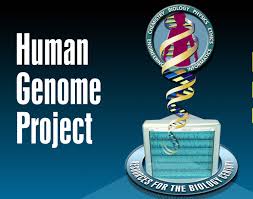 Genomics is a concept first developed in the 1970’s. It led to the Human Genome Project (HGP) being completed in 2003. The HGP was a massive international research venture that sequenced and mapped all of the human cell genes — together known as the genome. The HGP gave us the ability to read nature’s complete genetic blueprint for building a human being. Like you.
Genomics is a concept first developed in the 1970’s. It led to the Human Genome Project (HGP) being completed in 2003. The HGP was a massive international research venture that sequenced and mapped all of the human cell genes — together known as the genome. The HGP gave us the ability to read nature’s complete genetic blueprint for building a human being. Like you.
So what’s a genome?
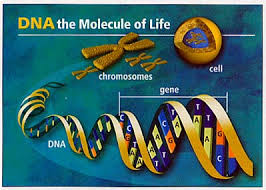 A genome is the whole ensemble of your genetic material. It’s the molecular guide of your DNA, your chromosomes, and your genes that tells how to make your cells. It’s the instruction manual for your body. That book is your genome and the study of that book is termed genomics. It’s pretty much a math exercise. And it’s deadly stuff for identifying criminals with.
A genome is the whole ensemble of your genetic material. It’s the molecular guide of your DNA, your chromosomes, and your genes that tells how to make your cells. It’s the instruction manual for your body. That book is your genome and the study of that book is termed genomics. It’s pretty much a math exercise. And it’s deadly stuff for identifying criminals with.
Let’s take a quick look at your biology.
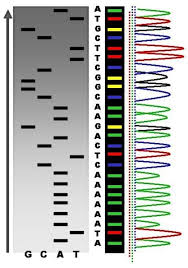 Deoxyribonucleic acid is the chemical compound that contains the instructions to develop and direct your life as an organism. DNA molecules are made of two twisting, paired strands, often referred to as a double helix.
Deoxyribonucleic acid is the chemical compound that contains the instructions to develop and direct your life as an organism. DNA molecules are made of two twisting, paired strands, often referred to as a double helix.
Each DNA strand is made of four chemical units, called nucleotide bases, which comprise the genetic “alphabet.” The bases are adenine (A), thymine (T), guanine (G), and cytosine (C). Bases on opposite strands pair specifically — an A always pairs with a T — a C always pairs with a G. The order of the As, Ts, Cs, and Gs determines the meaning of the information encoded in that part of a DNA molecule. It’s just like the order of letters determine the meaning of a word, only DNA is written out in a barcode locus.
Every single cell in your body contains a complete copy of the 3.2 billion DNA base pairs, or letters, that code your human genome.
DNA’s four-letter language contains information needed to build your physical body. A gene refers to the unit of DNA that carries the instructions for making a specific protein, or set of proteins, and there’s 23,000 genes in your genome code. Each gene directs an average of three proteins.
If you could peer inside your cells, you’d see your genome contained in 46 tightly packed bundles of DNA — 23 came from your mother and 23 from your father. These DNA bundles, called chromosomes, provide instructions that enable a one-cell embryo to develop into a 100 trillion-cell adult. So, every time the human body produces a sperm or an egg, 3 billion DNA letters must be copied and packaged so they can be passed along to future offspring.
 Humans come in many shapes and sizes, but we’re all very similar at the DNA level. In fact, the genomes of any two people are more than 99% the same. Still, the tiny fraction of the genome that varies among humans is critical when it comes to forensically identifying a particular individual. DNA variations are part of what makes each of us unique, but it’s in the genes that the real difference lies. They direct what you look like.
Humans come in many shapes and sizes, but we’re all very similar at the DNA level. In fact, the genomes of any two people are more than 99% the same. Still, the tiny fraction of the genome that varies among humans is critical when it comes to forensically identifying a particular individual. DNA variations are part of what makes each of us unique, but it’s in the genes that the real difference lies. They direct what you look like.
Okay. Enough of the biology lecture. How is genomics gonna catch some crooks?
It’s not just genomics. Science now has a great handle on how your DNA is formed and how your genes fine-tune your uniqueness. The problem has been in how to process a staggering forensic workload that has bottlenecked the crime labs and the courts — and how to put a face and a name to an unidentified DNA profile..
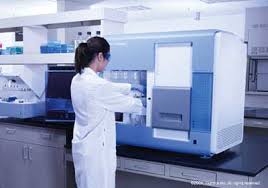 The answer lies in genomic computerization. The good news is that technological progress is being made faster than anyone ever dreamed possible. Now the labs are looking at your entire genome package for identification, not just at that little bit of nucleic or mitochondrial DNA which is dirty, volatile, and time-consuming stuff to process.
The answer lies in genomic computerization. The good news is that technological progress is being made faster than anyone ever dreamed possible. Now the labs are looking at your entire genome package for identification, not just at that little bit of nucleic or mitochondrial DNA which is dirty, volatile, and time-consuming stuff to process.
Advancements in computerized processing are allowing crime labs to build an entire picture of you as a suspect — not just an impersonal, academic graph of the matching points in either your biological evidence sample that you left behind at the scene, or your known reference sample that investigators obtained from you.
 Think about how many cold cases there are where the investigators have a clear DNA profile of you as the perpetrator, but they have absolutely no clue what you look like. They have no idea whether you’re young or old, black or white, have green eyes or brown. They don’t know your hair color or texture. They don’t know if you’re tall or short. And, in some cases, they don’t know if you’re male or female.
Think about how many cold cases there are where the investigators have a clear DNA profile of you as the perpetrator, but they have absolutely no clue what you look like. They have no idea whether you’re young or old, black or white, have green eyes or brown. They don’t know your hair color or texture. They don’t know if you’re tall or short. And, in some cases, they don’t know if you’re male or female.
Genomic profiling is going to change the game. Computers will speed it up.
 Illumina Corporation of San Diego is a world leader in Forensic Genomic technology. They’ve developed a process called Next Generation Sequencing (NGS) that can simultaneously analyze every locus-point in a traditional DNA barcode using less than 1 nanogram of a sample in a fraction of traditional turn-around time that it’s currently taking.
Illumina Corporation of San Diego is a world leader in Forensic Genomic technology. They’ve developed a process called Next Generation Sequencing (NGS) that can simultaneously analyze every locus-point in a traditional DNA barcode using less than 1 nanogram of a sample in a fraction of traditional turn-around time that it’s currently taking.
Illumina is also at the forefront of developing the new cornerstone of contemporary forensic science — being able to generate a physical description of the DNA’s donor based on their genome profile.
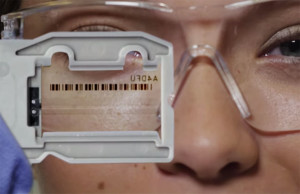 Think about the ramifications. It’s not only going to assist in solving current cases. It’s going to give a physical look at the perpetrators of cold cases. Identify found remains with no names. Help in sorting disaster victims. And make accurate aging estimations for missing children.
Think about the ramifications. It’s not only going to assist in solving current cases. It’s going to give a physical look at the perpetrators of cold cases. Identify found remains with no names. Help in sorting disaster victims. And make accurate aging estimations for missing children.
The speed and accuracy of forensic genomic profiling will have far reaching effect on the costs in the criminal justice system. Faster and higher rates of identification will remove more dangerous offenders from society and the reliability of their forensic identifications will result in less trial time. It will reduce investigator workload in chasing blind leads. And it will, undoubtedly, save lives.
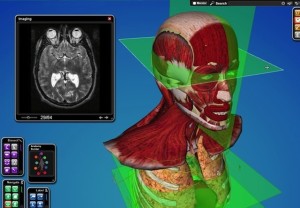 I think we’re in a fascinating time, watching technological advancements in forensic sciences. Genomic profiling is a fantastic breakthrough. We’re close to the day when your tiny biological dropping at the scene of your crime will go into a machine, the button pressed, and not just will your virtual mugshot come out — it’ll build a full-color, 3D image of your entire person right from your molecules to your moles.
I think we’re in a fascinating time, watching technological advancements in forensic sciences. Genomic profiling is a fantastic breakthrough. We’re close to the day when your tiny biological dropping at the scene of your crime will go into a machine, the button pressed, and not just will your virtual mugshot come out — it’ll build a full-color, 3D image of your entire person right from your molecules to your moles.

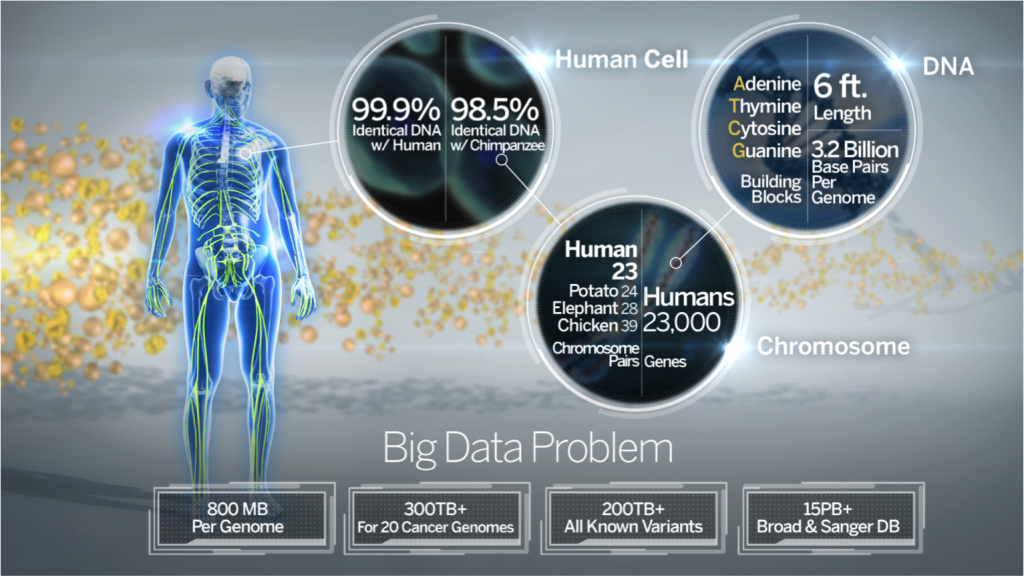
Would be great if they could use it for the JonBenet Ramsey case!
Not bad! It’s also worth mentioning that when that first genome was sequenced, it took a massive team (have you read that paper?! It’s a whole page of authors!) And it cost close to a billion dollars. Today, we can sequence a genome for about $5000. It’s expected to be less than $1k in the next five years or so. I’m bookmarking this post so I can just forward it along to people who ask what I do for a living LOL
Hi Kris. Make one wonder what’s in the future of understanding the human make-up. My bet’s that we’re going to make a breakthrough in knowing what consciousness is.
Wow. Though it is definitely amazing, it’s also creepy. It’s funny you should post about DNA, because I was researching it at about the same time. I’ll have to reread this as it’s early here and I want to make sure I squeeze every juicy tidbit I can out of this article, so you may get another comment from me.
P.S. I’m off to read for a while (y’know, my usual morning routine) and then I’ll respond to your HILARIOUS email. You had me in stitches, laughing so hard I almost woke Bob. 😀
Always love your comments, Sue. Yeah, these breakthroughs are getting creepy, but not as creepy as that clown I was telling you about. 😀
Truly amazing! Thanks for the lesson!
HI, Garry —
Thanks for such an amazing bit of science. I’m already thinking of ways to use this!
Makes me wonder where forensics will be in the next tewnty years, Judy. I can’t imagine the 22nd Century.